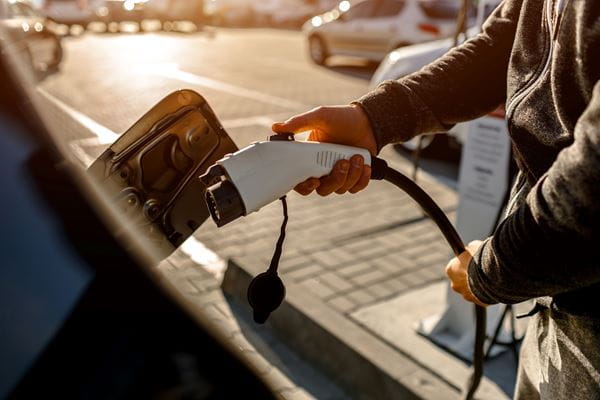
Maintaining the momentum: the crucial role of EV maintenance in electrification
The electric vehicle (EV) revolution is upon us, and as we navigate this transformative journey, it's evident that success hinges not only on the vehicles themselves but also on how we nurture their longevity. Among the various types of EVs, battery electric vehicles (BEVs) have emerged as frontrunners in sustainable mobility, primarily due to their significantly reduced maintenance needs when compared to traditional internal combustion engine (ICE) vehicles. In this article, we'll delve into the pivotal role of EV maintenance in propelling the electrification revolution.
Reduced maintenance: the powerhouse behind EVs
The secret to the success of BEVs lies in their engineering brilliance. With approximately 10 times fewer moving parts than ICE vehicles, BEVs offer remarkable maintenance cost savings. Maintenance costs for BEVs are approximately one-third of those for ICE vehicles. This cost efficiency isn't just a financial boon; it's a game-changer for fleet managers and businesses operating commercial vehicles. Total cost of ownership (TCO) is a critical metric for fleet managers, and vehicle downtime can significantly impact operational efficiency and profitability. BEVs, with their minimal maintenance and repair requirements, are poised to revolutionise the way we think about TCO. For more on TCO optimisation strategies, read our previous article.
Overcoming cost concerns: the key to EV adoption
While the financial benefits of reduced maintenance costs are compelling, it's essential to address the elephant in the room: upfront costs. Potential adopters often hesitate due to concerns about the initial price tag of EVs. However, the key to overcoming these concerns lies in recognising the long-term cost savings associated with BEVs. To maximise these savings, responsible driving habits and routine vehicle system checks are pivotal. By avoiding heavy acceleration and braking, which can lead to increased wear and tear, drivers can minimise maintenance needs.
Furthermore, it’s worth noting the positive trend in the EV market, with models in various price ranges becoming more accessible each year. As the EV market continues to expand, we can expect the purchase price to become less of a concern in the future. This, in turn, strengthen the economic argument for embracing electrification and highlights the increasing affordability of EVs over time.
Driver’s role in BEV maintenance: unlocking longevity and savings
BEVs introduce unique maintenance considerations that drivers and fleet managers must be aware of. The weight of the battery places additional stress on tyres, necessitating frequent tyre pressure and tread checks to stay safe on the road. One option to slow down this wear are EV tyres, but they do tend to be more costly, therefore regardless of your tyre choice, tyre pressure and tread should be checked frequently.
Proper charging practices are equally vital for battery health. Drivers are advised to avoid unnecessary fast charging, which can negatively impact the battery's long-term health. Moreover, maintaining the state of charge within a range of 20% to 80% is strongly recommended for optimal battery longevity. Many BEVs allow users to select this range through mobile applications during charging.
Collaborative ecosystem for EV maintenance
As the adoption of EVs continues to rise, so do the challenges associated with maintenance and repair. Completely avoiding any car damage is almost impossible so it's important to know what's involved with repairing EVs. Unlike ICE vehicles, BEVs lack access to an extensive support network. When an ICE vehicle malfunctions, drivers can typically rely on an established infrastructure of service centres and mechanics. However, the scenario is different for BEVs.
To address this challenge, industry players must collaborate to construct a new ecosystem dedicated to EV maintenance and repair. These innovative ecosystems are designed to prioritise efficiency repairing processes over the traditional approach of changing entire components or systems. For example, instead of replacing an entire battery pack, these ecosystems would focus on repairing or replacing only the specific faulty or worn-out components, such as individual battery cells. This approach not only reduces costs but also minimises resource wastage. Yet, these battery repair accreditations are currently quite limited, and it is crucial for manufacturers and repair networks to swiftly develop this expertise to further enhance the sustainability of the overall ecosystem.
When they exist, these new ecosystems offer comprehensive solutions that encompass all aspects of EV maintenance and repair. They include accurate diagnosis of issues, sourcing the necessary replacement parts or components, and ensuring access to skilled technicians proficient in repairing EV-specific systems. To establish and maintain these ecosystems, industry players, including established car manufacturers and innovative startups like Revolte, collaborate closely. Car manufactures bring their expertise and resources to the table, while startups can often introduce fresh perspectives and innovative solutions to address specific EV maintenance challenges.
In essence, these new ecosystems represent a shift towards sustainable and cost-effective maintenance practices for electric vehicles, enhancing the repairing of components rather than opting for wholesale replacements.
In conclusion, as we continue our journey toward a more sustainable future, the importance of EV maintenance as a driving force behind electrification becomes increasingly evident. With a total fleet of 3.4 million vehicles, and the largest multi-brand EV fleet in the world, at over 500,000 vehicles, our commitment to sustainability is unwavering. By fostering responsible driving practices, raising awareness of BEV-specific maintenance needs, and supporting the growth of a collaborative maintenance ecosystem, we can ensure that maintenance costs become a compelling reason to embrace electrification. In our collective quest for sustainable mobility, maintenance plays a pivotal role – let's continue advancing together towards a greener and more efficient automotive landscape.
To read our check-list of EV maintenance tips, read the article here. Electric Vehicle Maintenance Tips: Taking Care of Your EV’s Tyres | LeasePlan United Kingdom



